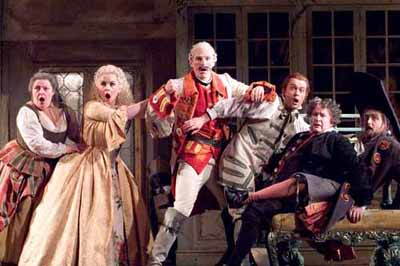
SPINOZA IN LAS VEGAS @ TATE Modern
by Sturtevant
Spinoza in Las Vegas was a half-hour long staged reading presented by the TATE in their Starr Auditorium theatre space. They should have been ashamed to charge money, no matter how little, to the event. Elaine Sturtevant is a fascinating woman, sure. An entertaining art personality, absolutely. What Sturtevant is not is a writer, director, or actor, that's fer darn sure. She has made a career out of recognizing talent in iconic artists (Warhol, Duchamp) ahead of the mainstream, and then copying their work in great detail. If only she had copied some of the more innovative theater pieces of the past fifty years with as much gusto, perhaps I would not have been alternately laughing my ass off and scratching my eyes out. Yes, this is a casual and catty review-- but to be fair, it is in this spirit of the show. Informal, insulting, and, praise the lord...brief.

















